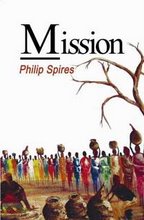History
changes when it is re-read. The casual reader, as opposed to the historian,
always reads history with one eye on the present: there is always comparison at
work whenever we reflect on events we assume are faithfully recorded from the
past. And this past is not itself fixed, since our appreciation of it has
already been formed as an amalgam of contemporary interpretations. On
re-reading Tacitus, therefore, the reader is also feeding from lasting
impressions formed by Cecil B DeMille, Gladiator, I Claudius. Julius Caesar,
Lindsay Davis, Spartacus and Caligula, at least.
But
Tacitus set for himself a different task from that which the contemporary
reader appreciates, in that he saw himself as merely a recorder, year by year,
of the important events that affected the public life of the empire. Tacitus
seems largely unconcerned with ordinary people, except where collective opinion
bore down on those with power or influence or, indeed, to record where those
everyday folk unlucky enough to be left in residence at the end of a siege were
summarily slaughtered. Neither, by and large, do slaves figure, except when they are paid or cajoled to act above their pay grade.
Tacitus
is interested in emperors, consuls, politicians in general, military leaders,
armies, rich socialites and influential foreigners, especially enemies. The
Annals of Imperial Rome thus catalogues internal intrigue and external warfare
and records how both impinged on a society we continue, despite much of the
evidence, to label ‘civilised’.
It
was not an age where prisoners were taken, unless they could be sold. Within
these pages there is much blood letting, many wars, and some fascinating detail
on the myriad ways human beings can set about killing one another. Current
horror genres could learn much from Tacitus, since the blend of blood and drama
is unrelenting. This was also an age of ceremony, where gods had to be
pacified, oracles consulted and diviners believed. Of course, if you chose not
to believe the soothsayers, you could always have them killed. Served them right,
one supposes. Never deliver a story you think might not be received gratefully.
There will always be consequences.
But
within these pages ceremony was often the determining factor. It could not be
by-passed. And of course, being civilised, Romans maintained respect for the
law. Murder, for instance, was always culpable, but when committed by
bovver-boy emperors, no doubt tattooed to their little boots, the crime often
went unpunished. Towns where only the old, the female and the young remained
after siege were of course subjected to mass slaughter, because none of those
left could possibly fight back. Just how important constitutional means were to
these living gods is illustrated by a fall from grace whose consequence was the
elimination of the offender’s entire family, just in case… In a particular case
this also meant doing away with a couple of young daughters, but at the last
minute an official noted that the law banned the execution of virgins. Not
wanting to stand on ceremony, the executioner was invited to rape them first
and then carry out his duty. Must do things properly… Presented with the
severed head of a rival, offered as proof that instruction have been dutifully
carried out, Nero calmly observed that the fellow had started to go grey.
But
what also must be borne in mind is that Tacitus, himself, was no contemporary
observer. His productive life was more than a generation later than any of the
events described in The Annals, whose stories begin half a century earlier than
that. So it is possible that the reported sexual acts in public, the free and
almost communal use of prostitutes and the general contempt for almost
everything below elite status was just exaggeration. It might just be that
contemporary mores required a vilification of the past, and that Tacitus was
willing to provide it. Pigs, apparently, do fly.
A
stunning juxtaposition comes in a comparison of two reported cases. One poor
chronicler historian had the cheek to suggest that Brutus and Cassius might not
have been all bad, despite their having murdered an emperor. The author, of
course, signed his own death sentence. A games promoter, on the other hand,
built a stadium that in the event collapsed, killing and maiming thousands. His
punishment was a limited exile, the judgment doubt influenced by the fact that
it was only the plebs who suffered.
During
The Annals, we perhaps begin to wonder why we read history and, indeed, why it
is written. By the time we have finished this account, we surely know. The
modern country seems to be a feeble invention when compared to the more durable
empire, which itself can be remarkably transient. Empires exist to pursue
conflict with other empires, usually at the periphery, but with the aim of
maintaining stability at the centre, where there is a constant struggle for
power. So while plotters were being uncovered and eliminated in Rome, the great
external threat at the end of this era came from the Parthian Empire. In anyone
does not recall the location of the Parthian Empire, please do check it out.
And then re-read history.

















